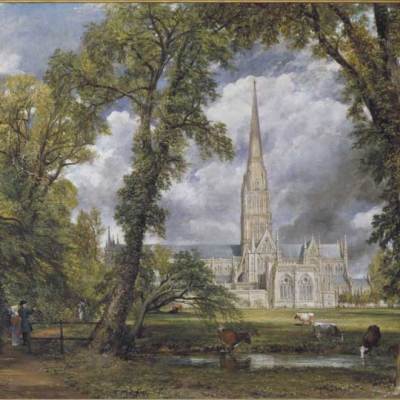Until earlier this week I must have been the only person connected to London’s architecture and design world who hadn’t yet made a summer pilgrimage to the Balfron Tower in Poplar, East London. I was invited to an evening soirée in Flat 130 on the 24th floor, which the designers Wayne Hemingway and his daughter Tilly have decked out – in collaboration with the National Trust – as it might have been in 1968. It was during that year, just after the building’s completion, that its architect Ernő Goldfinger famously lived in Flat 130 for two months to test his experiment in Brutalist high-rise living. So proud was Goldfinger of his achievement that he and his wife, Ursula, invited residents to a number of champagne-fuelled parties to hear what they had to say about the building.
A few weeks after the Goldfingers left Balfron, the partial collapse of Ronan Point in nearby Newham after a gas explosion decisively turned public opinion against high-rise living. Ernő’s dream of a flotilla of Balfron-like tower blocks rising all over London went unrealised, though he did go on to build Trellick Tower, Balfron’s smarter younger brother in North Kensington. As for Balfron, like much of Britain’s post-war social housing, the reality was far from utopian.
Today, Balfron lies all but empty. Its council tenants have been rehoused nearby, and the building is to be extensively refurbished by the local housing association, Poplar HARC. Until then it has been given over to the Bow Arts Trust, which has put together an arts programme for which the National Trust’s ‘pop-up’ 1968 flat is the final event. For me, it’s by far the most significant – but also the most contentious.
Walking into Flat 130 is a revelation after the alarmingly rickety lift, the grimy corridor and a succession of vacated flats. There’s an immediate burst of colour as we’re plunged into the Hemingway’s cheerful version of affordable 1968 high-rise living. Original features and fittings, including the brown vinyl floor tiles, have been revealed and polished up.
It’s all arranged as if the nuclear family have just popped out to the shops. In an adolescent boy’s room a Seekers record is spinning on the radiogram, while the younger girl’s room reveals her to be something of a Beatles fan. In the living room is a wonderfully comfy G-plan sofa and chair, prints of paintings by J.H. Lynch and yet more colourful Heal’s fabrics. But the Hemingway’s have aimed at authenticity rather than pastiche. The attention to detail is stunning, right down to the tins in the kitchen cupboard and newspaper on the glass-topped coffee table. The only let-downs are the clunky uPVC windows.
This pseudo-historical re-creation fits with the Trust’s recent attempts to make their historic properties feel ‘lived-in’. They are, though, conscious that Flat 130 is also a departure: ‘Why are we, an organisation better known for our country estates, miles of coastline and cream teas, opening a flat in a Brutalist, concrete tower in East London?’ The answer is manifold. The Trust is already in possession of Goldfinger’s own house, the pre-war 2 Willow Road in Hampstead, and they fashion a link between the aspirations of their founder, Octavia Hill, and those of Goldfinger, to improve housing conditions. More broadly, Brutalism is undergoing an unlikely revival among younger architecture and design circles. Part of the of the Trust’s motivation for this project is to change their image in the eyes of this audience.
Nevertheless, the project has provoked the ire of some, notably The Guardian’s architecture critic, Oliver Wainwright, who has described the building as ‘the zombie corpse of the welfare state’. It is certainly right to criticise selling off council housing at knockdown rates to developers, as Wainwright does, but this is hardly the most egregious example (just look at what’s happened at Elephant and Castle’s Heygate Estate). The difference is Balfron is listed and can’t be knocked down. The question is, therefore, really about memory.
For Wainwright, the cultural activity Balfron has seen serves only to make its Brutalist architecture more palatable to ‘the bankers of nearby Canary Wharf’ to whom its refurbished flats will be sold. But what the National Trust has done – and the very involvement of such a body – goes beyond this simple developer ruse (which Wainwright might have spotted if he hadn’t gone on a jolly to Monaco to review a £260m penthouse).
Flat 130 is putting Balfron in the spotlight, making Brutalist architecture more accessible – literally and conceptually – and starting a wider debate about its ideas and legacy. The problem with this for the likes of Wainwright is the risk of decontextualisation, of rewriting how Brutalism is remembered so that it becomes purely an ‘aesthetic’ rather than the ‘ethic’ it was always meant to be – a ‘Disneyfied’ Brutalism, if you will (and not helped by some of the garishness of the Hemingways’ creations).
This argument woefully underestimates the sheer force of Brutalism’s polemic. Whether you love or loathe it, Brutalist architecture is simply un-ignorable and its social project is physically inscribed in its spaces, geometric forms and the very moulding of its concrete. Just looking up at Balfron you get a clear sense of exactly how its creators hoped people might live. As long as it stands, it will serve as a reminder of those utopian aspirations, however flawed, and perhaps even inspire us today as we look to build our own future.
Flat 130 is open at the Balfron Tower, Poplar, until 12 October. For further information visit the National Trust’s website.






